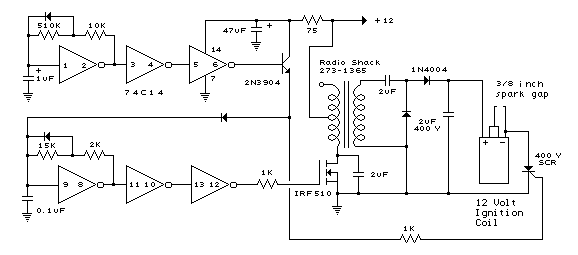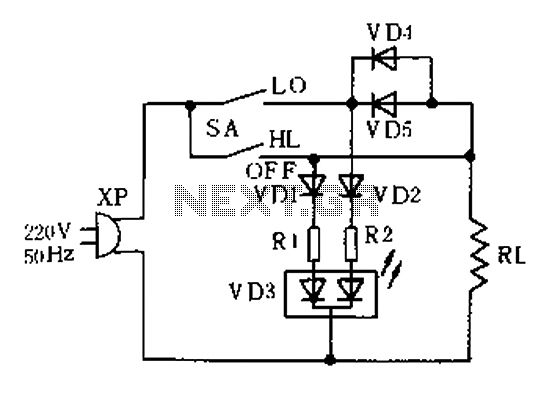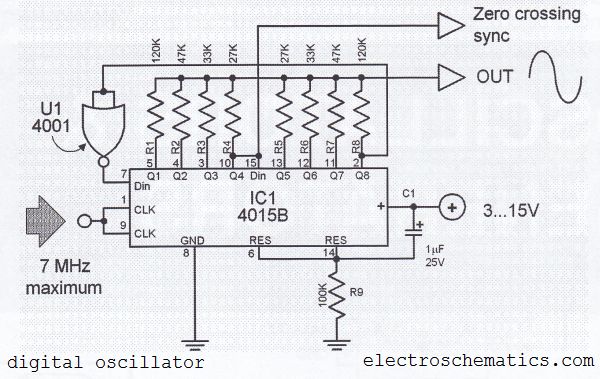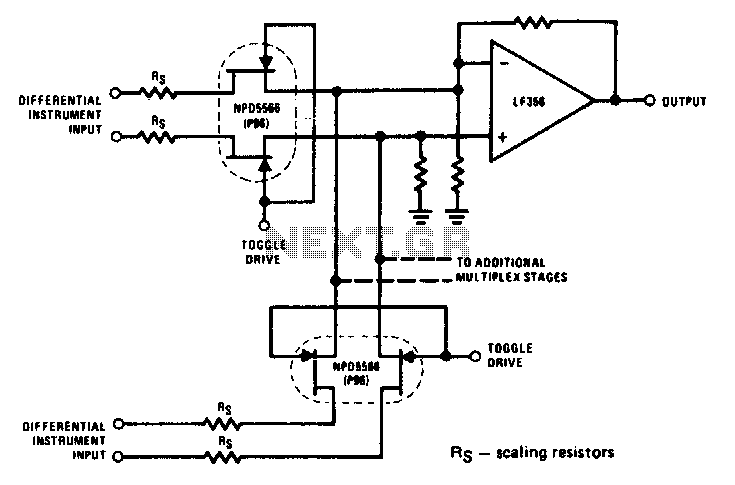
Having a differential amplifier and overcurrent protection for power supply circuit 2
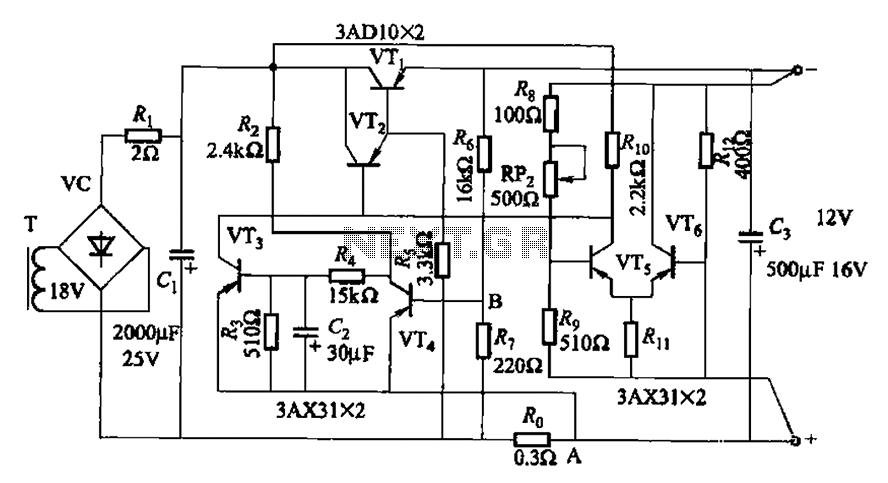
The circuit features a current protection mechanism utilizing transistors VTa, VT4, and a sense resistor Ro. When an overcurrent or short-circuit fault occurs, the power supply cannot resume normal operation because the conduction condition of VT3 remains unchanged, resulting in a zero output voltage. To reset the circuit, it is necessary to either re-close the system or incorporate a reset button in the collector circuit of VTa. Additionally, capacitor Cz is used to delay the power-on action, ensuring that the pilot signal passes through VT4 to establish the output voltage. The resistor Rs functions as a regulator, maintaining an appropriate bias for VTi.
The current protection circuit employs a series of transistors and resistors to safeguard against overcurrent conditions. Transistor VTa acts as the primary control element, while VT4 serves to regulate the output voltage. The sense resistor Ro is critical for detecting current levels; when the current exceeds a predetermined threshold, it triggers the protective measures.
In the event of an overcurrent or short-circuit, the circuit enters a fault state where VT3 remains non-conductive, preventing the output voltage from rising above zero. This state effectively disables the power supply to protect downstream components from damage. To restore functionality, the circuit must be reset. This can be achieved either by manually re-closing the circuit or by integrating a reset button in the collector path of VTa, allowing for a controlled restart.
Capacitor Cz plays a vital role in managing the timing of the circuit's response to power restoration. Upon re-energization, Cz delays the activation of the output voltage until the system is stable, ensuring that VT4 is properly activated to provide the necessary voltage. The resistor Rs is essential for setting the correct bias point for VTi, enabling reliable operation of the circuit under normal conditions.
This design illustrates a robust approach to current protection, combining active and passive components to ensure safe operation in the presence of fault conditions. The careful selection of component values and configurations is crucial for achieving the desired performance and reliability in various applications. By the transistor VTa, VT4, sense resistor Ro-current protection circuit and other components. The power supply after overcurrent or short-circuit fault is eliminated, can not resume normal operation (because VT3 conduction condition has not changed, the output voltage is still zero). To reset, you must re-closing or series in the collector circuit VTa a reset button for the job. Now the capacitor Cz from closing when the power delay action to ensure that the pilot through VT4, in order to establish the output voltage; electrical resistance Rs of the role of the regulator is to ensure that there is an appropriate VTi hope bias.
The current protection circuit employs a series of transistors and resistors to safeguard against overcurrent conditions. Transistor VTa acts as the primary control element, while VT4 serves to regulate the output voltage. The sense resistor Ro is critical for detecting current levels; when the current exceeds a predetermined threshold, it triggers the protective measures.
In the event of an overcurrent or short-circuit, the circuit enters a fault state where VT3 remains non-conductive, preventing the output voltage from rising above zero. This state effectively disables the power supply to protect downstream components from damage. To restore functionality, the circuit must be reset. This can be achieved either by manually re-closing the circuit or by integrating a reset button in the collector path of VTa, allowing for a controlled restart.
Capacitor Cz plays a vital role in managing the timing of the circuit's response to power restoration. Upon re-energization, Cz delays the activation of the output voltage until the system is stable, ensuring that VT4 is properly activated to provide the necessary voltage. The resistor Rs is essential for setting the correct bias point for VTi, enabling reliable operation of the circuit under normal conditions.
This design illustrates a robust approach to current protection, combining active and passive components to ensure safe operation in the presence of fault conditions. The careful selection of component values and configurations is crucial for achieving the desired performance and reliability in various applications. By the transistor VTa, VT4, sense resistor Ro-current protection circuit and other components. The power supply after overcurrent or short-circuit fault is eliminated, can not resume normal operation (because VT3 conduction condition has not changed, the output voltage is still zero). To reset, you must re-closing or series in the collector circuit VTa a reset button for the job. Now the capacitor Cz from closing when the power delay action to ensure that the pilot through VT4, in order to establish the output voltage; electrical resistance Rs of the role of the regulator is to ensure that there is an appropriate VTi hope bias.

